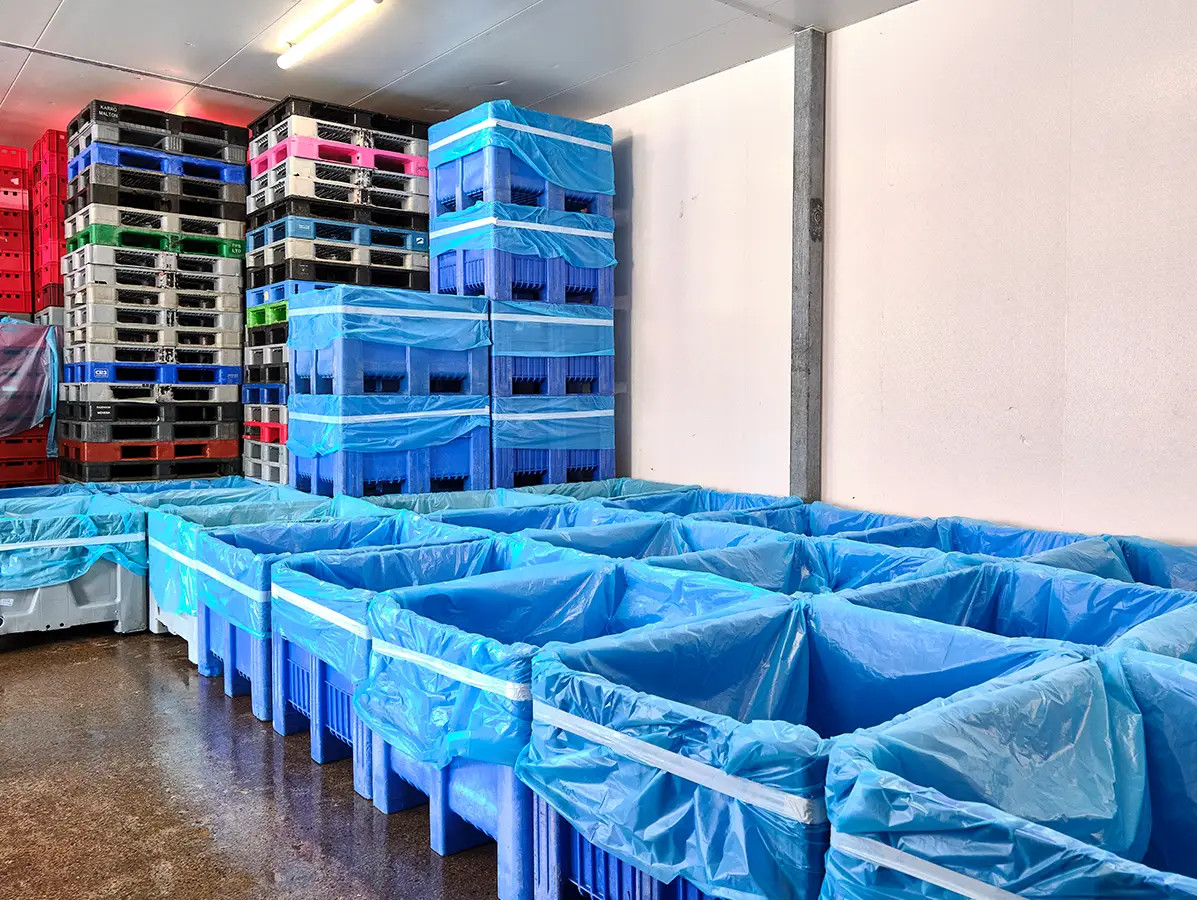
F. Wellink Lekkerkerk BV is one of the largest pork processors in Europe. The company was founded in 1979 and is based in Lekkerkerk. After so many years, the inevitable question arises: renovate or relocate? The company opted for the former.
“The interior now looks brand new again,” says a proud CEO, Peter Pronk. In partnership with HAP BV from Beek en Donk, the factory spaces are being upgraded in phases with new hygienic walls and/or ceilings. This investment ensures Wellink is ready for many years to come. Peter explains: “We’re operating in a relatively old facility. Over time, the walls have taken quite a beating. To remain both presentable and compliant, we faced a choice: either invest in new walls or build a new factory elsewhere. The opportunity to purchase the building after 2029 ultimately tipped the scale. Renovating was simply the most logical and affordable option for us.”
Wellink processes around one million kilos of pork per week. Peter: “We operate under the concept ‘Tailored to your needs.’ We supply various pork products derived from the pig’s head, tailored to customer specifications. Additionally, we specialize in producing pre-mixes; meat products in different sizes, textures, and compositions.” A portion of Wellink’s output is exported abroad. Peter continues: “Before this, I lived and worked in China for twelve years. During that time, I helped Western companies do business in China. In 2020, I became a co-shareholder. Since September of that same year, I’ve had the privilege of leading this great company together with a fantastic team.”

Peter Pronk and Jels Berkers
Under the direction of Peter and co-director Frans Sierevogel, the renovation of the walls and ceilings began more than two years ago. Wellink found a project partner in Jels Berkers, owner of HAP Hygiënische Afbouw Projecten. Jels: “We started with a test wall of 15 square meters, and soon after we tackled the rest of the cold room. Eventually, we were asked to take on the entire factory. We assessed each individual space and provided tailored advice.” That was followed by perhaps the most challenging part of the job: the planning.
Renovating an active production site demands extremely careful planning. Jels: “We chose to phase the work. That keeps the project manageable and allows us to closely monitor progress.” Peter: “All renovation work is carried out over the weekend. Our technical expert prepares everything in advance so that when the HAP team arrives, they can get started right away. It all runs very smoothly and efficiently. What they promise at the table, they actually deliver on-site. That gives us confidence and peace of mind to hand over the job. We don’t need to supervise the process, just show up to open and close the door.”
By now, various areas of the plant have been fitted with new Glasbord® panels; Jels’s go-to brand. Over the course of his career, he’s worked with many types of panels. According to him, Glasbord® is the most hygienic and durable solution and the easiest to install. “I’ve been in a lot of factories where the walls have ended up looking like patchwork,” he explains. “Tiled walls that have been plastered over, for instance. Or steel sandwich panels with rust spots that were painted over or partly covered with steel sheets or other materials. These may work as a temporary solution, but from a hygiene standpoint, they’re not sustainable. That’s where our renovation panels make a real difference.”
According to Jels, the panels are also increasingly used in new construction. And for good reason, because the fiberglass-reinforced sheets are impact-resistant, scratch-resistant, rustproof, and extremely long-lasting. Thanks to a special protective coating, the walls are resistant to mold and bacteria. They’re also low-maintenance and easy to clean.
Peter: “And let’s not forget; looks matter too! The wall and ceiling panels give the space a modern, well-kept appearance. That reflects quality. We run a tight ship, and we like to radiate that. The bright white color also creates a pleasant work environment. We expect the work to be completed by summer. After that, we’ll be good to go for years to come.”
Photos: ©Fred Libouchant
Source: Vakblad Voedingsindustrie 2025